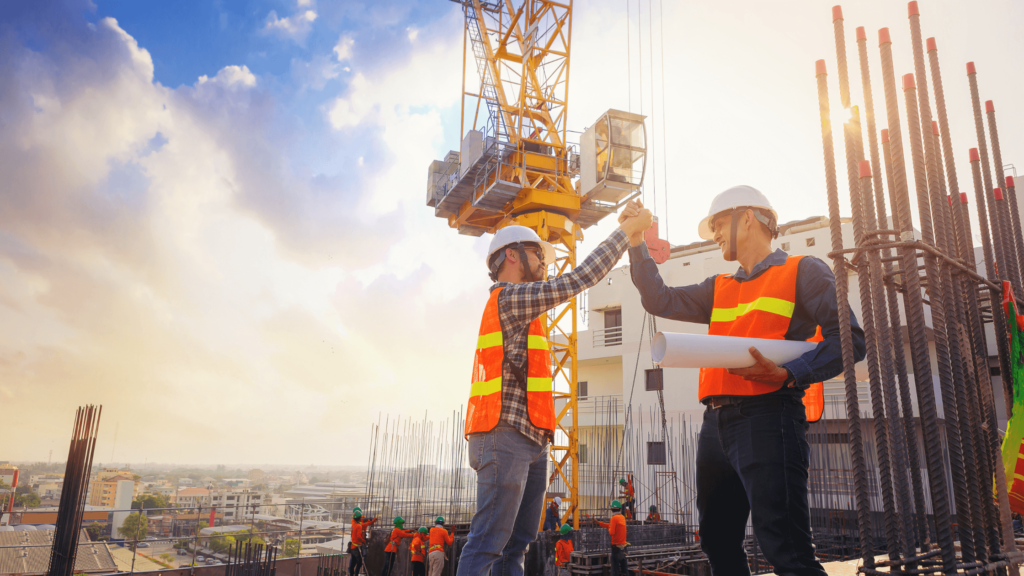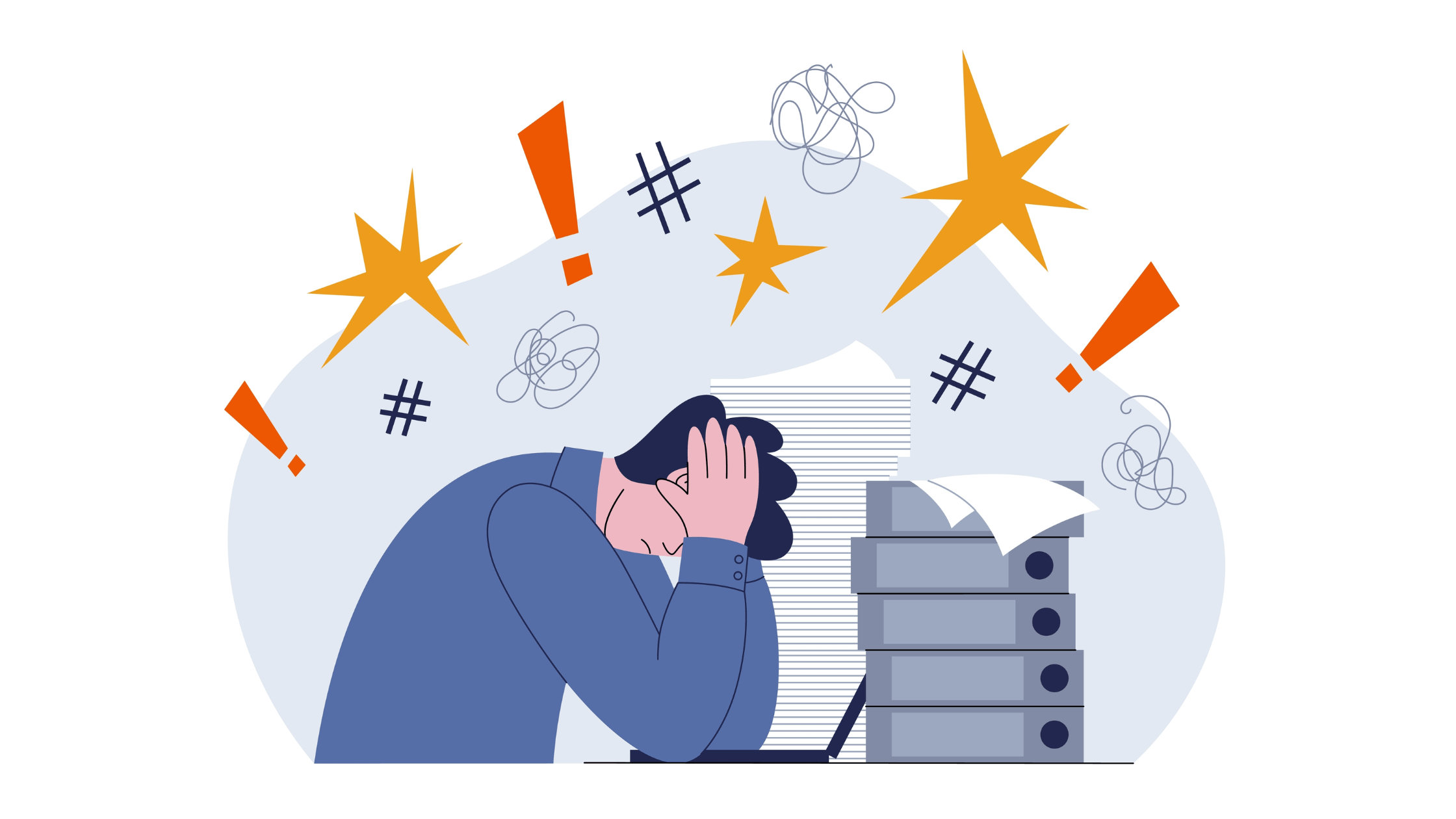Burnout doesn’t just leave you feeling physically drained—it can also seriously affect your mental and emotional well-being. When you’re burnt out, it can sap your motivation, make you irritable, and even lead to health problems like insomnia, headaches, and chronic fatigue. For those in demanding fields like construction, engineering, or architecture, the pressure to meet deadlines, manage high-stakes projects, and juggle long hours can increase the risk of burnout even more. By recognizing the early warning signs, prioritizing self-care, and creating a supportive work environment, you can take steps to protect your well-being.
Quick look
- Burnout can impact your physical health and your emotional well-being, leading to irritability, lack of motivation, and fatigue.
- High-pressure industries, such as construction, engineering, and architecture, are more susceptible to burnout due to their demanding workloads, tight deadlines, and long hours.
- Early signs of burnout include exhaustion, detachment, and reduced performance. Preventive actions can address these early signs.
- Self-care practices such as setting boundaries, taking regular breaks, and maintaining a healthy work-life balance are essential for preventing burnout.
- Employers and employees both have a role in fostering a supportive work environment that prioritizes mental health. Wellness initiatives are a key factor in reducing burnout.
The basics of burnout
Burnout is a state of physical, mental, and emotional exhaustion caused by prolonged stress. It manifests when demands consistently outweigh the resources and energy available to meet them. Burnout doesn’t just affect individuals—it can undermine team dynamics, project outcomes, and workplace safety. Burnout becomes a particularly pressing concern in industries like construction and engineering, where deadlines are tight and mistakes can be costly.
For workers in physically and mentally demanding trades, burnout’s impact extends beyond emotional fatigue. It can result in higher rates of absenteeism, increased job turnover, and even safety hazards on-site. Long hours, high-stakes projects, and an expectation to “push through” the stress often amplify the issue. Addressing burnout isn’t just about improving individual well-being; it’s essential for maintaining a safer, more productive workplace.
Sobering statistics
Burnout is alarmingly prevalent worldwide. According to the World Health Organization, 59% of workers globally report experiencing burnout. In the U.S., surveys reveal that 77% of professionals feel burned out in some capacity, with 27% citing it as a constant struggle.
The statistics are even more concerning in high-stress fields like construction, engineering, and architecture. The Construction Industry Alliance for Suicide Prevention reports that stress-related burnout contributes to mental health issues, including alarmingly high suicide rates—construction workers are four times more likely to die by suicide than the national average. Furthermore, a survey by Autodesk found that 70% of architecture and engineering professionals feel emotionally drained, citing relentless deadlines as a significant contributor. Addressing burnout in these trades is critical for worker health and industry stability.
How to know if you’re experiencing burnout

Emotional exhaustion
Emotional exhaustion is one of the earliest and most recognizable signs of burnout. It can cause you to feel constantly drained, irritable, or even detached from your work. For individuals in high-pressure jobs, this could mean dreading the start of each workday or struggling to maintain patience with coworkers and clients. Emotional exhaustion affects personal well-being and reduces the ability to collaborate effectively in team environments.
Physical fatigue
Burnout is often accompanied by chronic physical exhaustion. Even after a full night’s sleep, you might feel perpetually tired. This can manifest as headaches, muscle tension, or a general sense of sluggishness. For workers in physically demanding fields like construction, this fatigue can increase the likelihood of workplace injuries, as it reduces alertness and reaction time.
Reduced productivity
This chronic fatigue often leads to a noticeable dip in productivity. Tasks that were once straightforward may feel overwhelming, and meeting deadlines can become a constant struggle. Reduced efficiency often compounds the stress, creating a cycle where falling behind further exacerbates burnout symptoms. This can be particularly detrimental in industries where precision and timeliness are non-negotiable.
Detachment
Another common sign of burnout is feeling disconnected from work or colleagues. You may avoid team interactions or feel indifferent toward your job responsibilities. This emotional detachment often stems from prolonged stress and can create further isolation, making it harder to ask for help or seek solutions.
Increased cynicism
Burnout can breed negativity and cynicism. You may find yourself doubting your contributions or questioning the value of your work. For professionals in high-stakes fields, this mindset can lead to decreased motivation and a reluctance to engage with projects fully.
Health issues
Stress-related burnout doesn’t just impact mental health—it can lead to physical health problems. High blood pressure, digestive issues, and a weakened immune system are common outcomes. Over time, these health challenges can become chronic, further compounding the effects of burnout.
What causes burnout?
1. Excessive workloads
One of the leading causes of burnout is being overwhelmed with an unmanageable workload. In industries like construction and architecture, projects often require long hours and constant multitasking. When workers feel they can’t keep up, stress accumulates, leading to exhaustion and reduced performance.
2. Lack of support
Feeling unsupported at work can exacerbate burnout. Whether it’s inadequate communication from supervisors or a lack of team collaboration, insufficient support leaves workers feeling isolated. This lack of support can increase mistakes, stress, and dissatisfaction in high-risk jobs.
3. Poor work-life balance
An unhealthy work-life balance is a major contributor to burnout. Long hours and the inability to disconnect from work can take a toll on mental and physical health. This is especially true in fields with tight deadlines or on-call expectations, where workers often prioritize job responsibilities over personal well-being.
4. Unrealistic deadlines
Tight or constantly shifting deadlines create an environment of perpetual stress. Workers may feel pressured to sacrifice quality for speed, leading to dissatisfaction and burnout. In architecture and construction, where precision is critical, unrealistic timelines can result in heightened anxiety and diminished morale.
Out with burnout

How to avoid burnout at home and in the workplace
Preventing burnout starts with striking a balance between work and personal life. At home, prioritizing rest, engaging in hobbies, and staying connected with family and friends can recharge mental energy. In the workplace, setting boundaries, such as not answering emails after hours, can help maintain a healthier balance. Practices like meditation or regular exercise are effective ways to manage stress.
Workplace adjustments are equally important. Breaking tasks into manageable chunks, setting realistic goals, and scheduling regular breaks can significantly reduce stress. Workers should feel empowered to communicate with supervisors about workloads or deadlines, creating a culture where asking for help is normalized.
What employers AND employees can do
Both employers and employees have roles to play in reducing burnout. Employers can provide resources like wellness programs, counseling, or stress management workshops. Creating an open-door policy where workers feel comfortable discussing their concerns without judgment is vital.
Employees should focus on time management, self-care, and proactive communication. Identifying when stress becomes overwhelming and seeking help early can prevent burnout from escalating. Collaboration between employees and employers fosters a supportive environment that prioritizes mental health.
Why focusing on workplace well-being is better for business
Investing in workplace well-being doesn’t just benefit employees—it makes good business sense. Happier, healthier workers are more productive, creative, and engaged. Companies prioritizing mental health see lower turnover rates, reduced absenteeism, and improved team morale. Creating a supportive workplace culture ultimately leads to better project outcomes and a stronger reputation within the industry.
Bottom line
Burnout is a serious issue but can be managed with the right strategies. By recognizing the signs, addressing the root causes, and implementing solutions at both individual and organizational levels, it’s possible to create healthier work environments.
Like this and want more content like it? Subscribe to our weekly newsletter and follow us on social media for more insights on staying productive and safe in high-stress industries.



3 comments